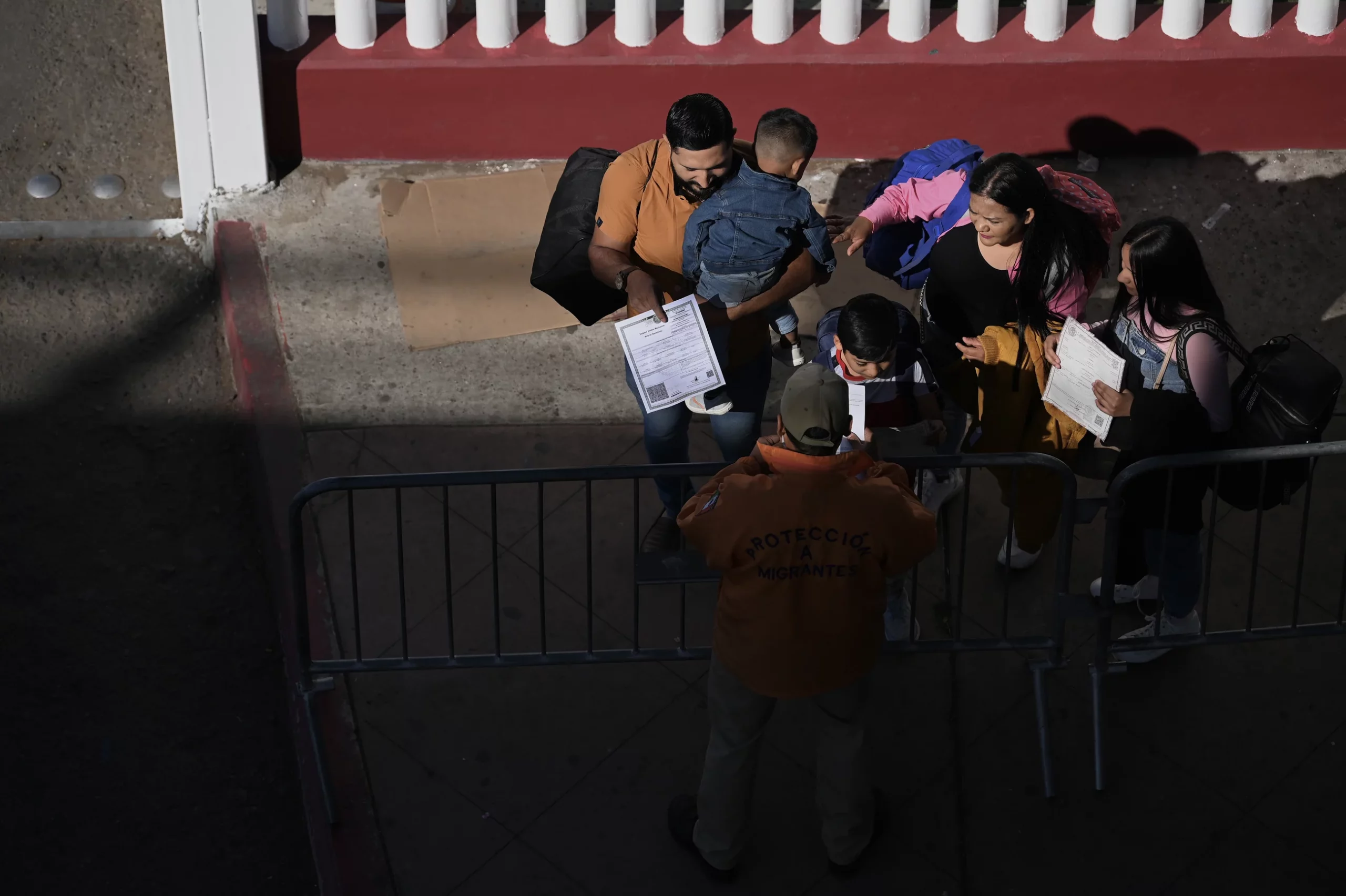“Katastrofa. Katastrofa.”
A man named Piotr repeats this like a mantra. On a warm fall evening in Tijuana, he’s the first in a long line to request asylum in the U.S.
“Katastrofa,” he says again, on the verge of tears. It’s the Russian word for catastrophe. Piotr, a middle-aged man who requested that his last name be withheld to protect relatives back home, left Moscow more than six months ago with his immediate family — his wife and two teenage sons.
He says the war with Ukraine had made their lives unlivable in Russia, and he fears for his sons — military conscription there is obligatory. “Russia is so difficult,” he says. “I can’t describe it. It’s so difficult for me. Katastrofa!”
Piotr says he and his family first went to Mexico City, where they lived working odd jobs until they were approved for an appointment with U.S. Customs and Border Protection. This is the big day. He showed up six hours ahead of time. Piotr plans to ask the U.S. for asylum for his family and himself.
So do dozens of others who have been camping out in this line all day, waiting for their interviews. It’s mostly families. There are several interview slots throughout the day. These people are camping out for the late evening round, in hopes that by morning, they’ll be on the other side, in San Diego.
In the past year, the Southwest border has received historic numbers of migrants. More than 2.4 million people. It’s been record-breaking numbers for the past few years. San Diego alone has received more than 230,000 people this year. That’s a 30% increase from the year before.
Republicans have said it’s because of the Biden administration’s weak immigration policies.
The government has said it’s a symptom of the unprecedented displacement of people worldwide. Biden has pursued a two-fold immigration policy: punishing undocumented border crossings and expanding legal avenues to apply to get into the U.S.
“We can’t stop people from making the journey,” he’s said. “But we can require them to come here, and they — that they come here in an orderly way under U.S. law.”
Tijuana is a normally bustling, boisterous city: Banda music (a style of Mexican music and type of ensemble that heavily features brass and percussion) pours out of restaurants; street vendors yell offers; and drivers stuck in traffic honk in annoyance.
This contrast with the silence of the migrants standing in line creates a somewhat eerie feeling. They are tired. They say they want to follow the legal pathways to enter the U.S. but it’s been a grueling process.
Many of them tell NPR that they’ve waited for about six months just to get an interview. This leads to desperation. Piotr says after half a year of trying to make ends meet in Mexico City, he began to consider just crossing the border without papers.
Another migrant, a young woman named Rossi Alejandra, says she also considered this. As she too waits in line, she reminisces about her life in Venezuela, where she was a first-year medical student. She says police and government harassment made everyday life impossible. “It’s a dictatorship, plain and simple,” she says.
She left for Mexico, where she lived in shelters while she waited for months to get an appointment with U.S. Customs and Border Protection. “There were moments when I became desperate. A month passed. Two months. And I started thinking. … Should I try and just cross the border?”
Republicans have accused the Biden administration of being too soft on border enforcement, and of enacting policies that broadcast to the world that the U.S. is wide open to immigration. As presidential campaigns ramp up, so have those criticisms. “The Biden border crisis has wreaked havoc across the United States and has put Americans in danger,” Florida Gov. Ron DeSantis said.
“Upon my inauguration, I will immediately terminate every open borders policy of the Biden administration,” former President Donald Trump said recently at a rally in Iowa.
In response, President Biden has move toward more enforcement. In recent weeks he announced he would build up to 20 miles of border wall, and has resumed deportation flights to Venezuela.
“It is critical that Venezuelans understand that those who have arrived here after July 31, 2023, are not eligible for such protection,” warned Department of Homeland Security Secretary Alejandro Mayorkas recently, “and instead will be removed when they are found to not have a legal basis to stay.”
At the Tijuana port of entry, there’s a sense of excitement among the people waiting in line for their interviews but also an awareness that life for migrants and asylum seekers in the U.S. is getting harder.
Standing in the Tijuana line, a young woman in a blue jacket looks ecstatic. Wymberly Muñoz was a physical therapist in Venezuela. Her father left for New York before she was born.
“I’ve been imagining that city since I was a child,” she beams. As the years progressed, her city, Barinas, was overtaken by violence. She recently decided to come to the U.S. and find her father in New York.
She’s excited at the possibility of being allowed in, but she’s also heard the news about New York: The city has said it is at capacity and can no longer offer shelter. Migrants without work permits can’t find employment.
“Of course I worry about this,” Muñoz says. “What awaits me there? Only God knows.”
But like most here, she feels that at the end of the day, it can’t be worse than the situation she is fleeing.
Migrants are showing up at the U.S. Southern border in historic numbers. Here’s why




